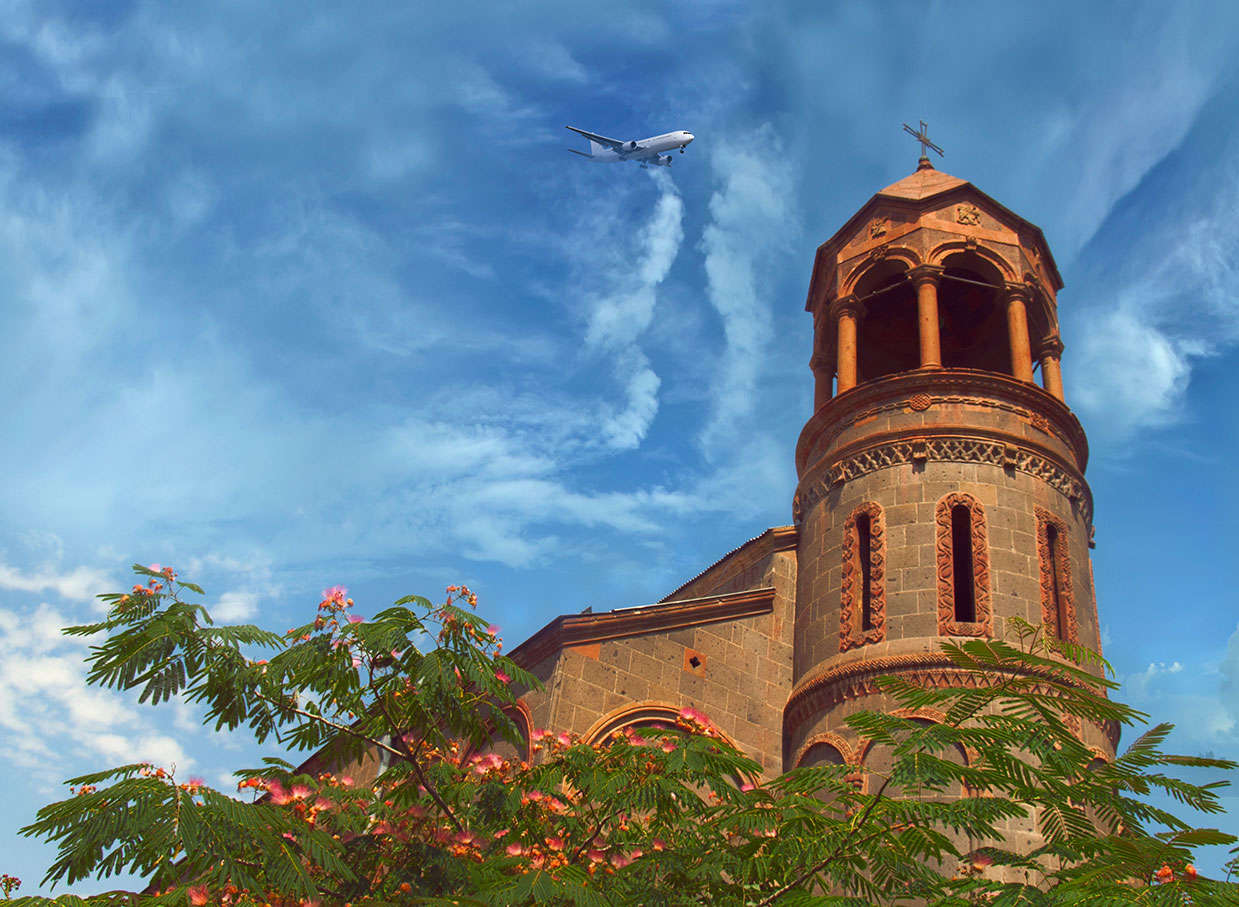Oshakan
Oshakan – one of the most famous places in Armenia, the final resting place of Mesrop Mashtots, the inventor of the Armenian alphabet. The village is located in the interesting province of Aragatsotn. Nature is diverse here. There are attractive places in all directions of the region. Here is the highest mountain of the Republic of Armenia: Aragats with its four peaks. The highest one is the northern peak (4090m). On the slopes of the mountain, you can taste a traditional Armenian dish – khash. At 3300 meters altitude, the mountain lake of a volcanic origin Kari lich – Stone Lake – is situated. Nearby, there is a research centre for cosmic radiation.
The capital of the province is Ashtarak. This city is located about 22 kilometres northwest of the capital Yerevan. The river Kasakh flows through the city. A high three-arched bridge from the 17th century connects the two halves of the city. Ashtarak is known for its low houses, beautiful nature and many churches. The churches of Ashtarak include Tsiranavor, Karmravor, Spitakavor, the Church of the Holy Marine and the sacred Sargis. Many famous Armenians lived and worked in Ashtarak. Not long ago, archaeological excavations were carried out in Ashtarak. Along the Kasakh there are many caves where coloured rock paintings have been found. They represent various cult and hunting scenes. In the nearby area, you may discover a fortified housing estate. West of Ashtarak, the historical village Oshakan is located. Although the village has a small area and population, it has a rich history and culture. The river Kasakh divides the village into two parts.
Oshakan was always associated with the name of Mesrop Mashtots. Mashtots' best friend, Prince Vahan Amatuni, lived here. Mesrop Mashtots died in 440. After his death, his remains were buried in Oshakan and a small chapel was built over it. Only in the second half of the 19th century, this chapel was replaced by the large one-nave church of the sacred Mesrop Mashtots. Even today, this church is located in the centre of Oshakan. Oshakan is also a well-known place of pilgrimage. Although in the middle of the 20th-century attempts have been made to make the single-nave basilica more colourful with frescoed motives from the life of Mashtots, but it did not work so well. The cylindrical bell tower, which was built on the east side, has a unique architectural feature.
In the nearby orchard, the letters of the Armenian alphabet, which are a unique work of art, attract many tourists since 2005. Carved from the reddish tuff, the crucifixes stand proudly and represent the unique culture, language, and thinking of the Armenian people. Each letter has its own specificity and no letter looks like the other. Here you can see many people taking pictures with the first letter of their name. In the nearby orchard, the letters of the Armenian alphabet, which are a unique work of art, attract many tourists since 2005. Carved from the reddish tuff, the crucifixes stand proudly and represent the unique culture, language, and thinking of the Armenian people. Each letter has its own specificity and no letter looks like the other. Here you can see many people taking pictures with the first letter of their name. On Didikond Hill, there is a famous excavation site – the ruins of an Urartian fortress dating from the 7th to the 6th century BC. Here you can also find a tomb from the 11th century BC. On this site, many ancient weapons, tools, gold and silver jewellery were discovered. There is an Urartian masonry on the hill. Its parts can now be found in various museums in Yerevan.







